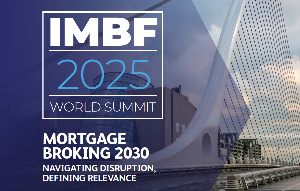
Across all sectors, industrial and large format retail are at the top of investors’ wish lists.
Total returns for industrial property tipped 21.8% over the year to March, the highest total recorded since the inception of MSCI’s industrials index in 1994.
The other standout performer over the year has been the large format retail sector. Over the year to March, the sector generated total returns of 22.4%, the highest recorded by MSCI.
The latest data from MSCI shows record low interest rates have escalated the competition for higher yielding property assets leading to yield compression, lifting values and, in turn, total returns.
Differences in total return figures across sectors highlight the strong preference investors have for assets with more defensive characteristics when economic uncertainty and volatility is apparent.
Industrial continuing its rise
Strong demand and supply fundamentals underpin the industrial property sector.
Competition for assets from a range of buyers, such as wealthy individuals, syndicators and listed property companies has boosted property values.
Despite the disruption caused by Covid-19 enforced lockdowns, industrial development ramped up over the year to April 2021.
Building consent approval was issued for 1.14 million square metres of new industrial development across the country, up 16.6% on the total recorded a year prior, according to Stats NZ.
Building consent approval increased in 11 of 16 regions led by Manawatū-Whanganui where the total floor area consented rose by 329%.
In the Bay of Plenty consents rose by 102% to 135,816m², a figure which has been surpassed once since 1991.
South Island consents were up by 14.1% to 291,600m² with Canterbury accounting for 59.6% of the total.
Large format retail a winner
Also sharing many of the industrial sector’s defensive fundamentals, large format retail’s appeal has been further bolstered by a significant increase in consumer spending which is underpinning tenant demand.
The solid fundamentals have again attracted high levels of interest from a wide range of investors driving up capital values.
Unlike large format retail, MSCI’s data shows shopping centre capital values dropped by 5.1% over the year, resulting in total returns sitting at 1.8%.
The lower returns reflect the different trading environment in which the retail sub-sectors are operating.
While returns are lower than other sectors, the result is an improvement for the sector with the rate of value decline slowing and total returns turning positive for the first time since June 2019.
This suggests investors see value in the sector, particularly for centres where future prospects are improving due to the economic recovery.
Across retail in general, the March 2021 quarter showed more promising signs.
The total value of retail sales increased by $648 million between the December and March quarters, with 10 of the 13 core industries recording greater sales values than the previous quarter.
Sales volumes bounced back from a fall in the previous quarter with a total increase of 5.5% across the core industries.
When assessing the performance of retail within industries, the hardware, building and garden supplies industry was a standout with a total dollar value increase in sales of $144 million, the largest among core retail industries.
Looking at results across the country, 10 of the 16 regions had increased sales values compared to the previous quarter.
Canterbury recorded the largest increase (2.3%), followed by Auckland and Waikato.
Office – sentiment improving
Office returns have lifted over recent months to 13% over the year to March, up from 6.6% a year ago.
MSCI says this provides a strong indication investors have looked through the short-term disruption to the office market due to Covid-19 enforced changes in work practices.
An increased focus on sustainability from both public and private sector office occupiers has boosted demand for premises with certified green credentials lifting over recent years.
From January 1 this year all government agencies were told when signing or renewing a lease for premises of 2,000m² or more, the property must have a minimum 4-star energy efficiency rating (5-star for a new-build).
The influence which the sustainable development trend is having on the office market is illustrated in the latest Colliers’ Auckland CBD office vacancy survey.
While overall prime grade vacancy at the end of last year stood at 6.8%, vacancy within Green Star rated buildings was just 3.8%.
The development sector is also responding to the shift, adding just under 50,000m² of Green Star rated buildings to the Auckland CBD’s inventory.




Comments
No comments yet.
Sign In to add your comment